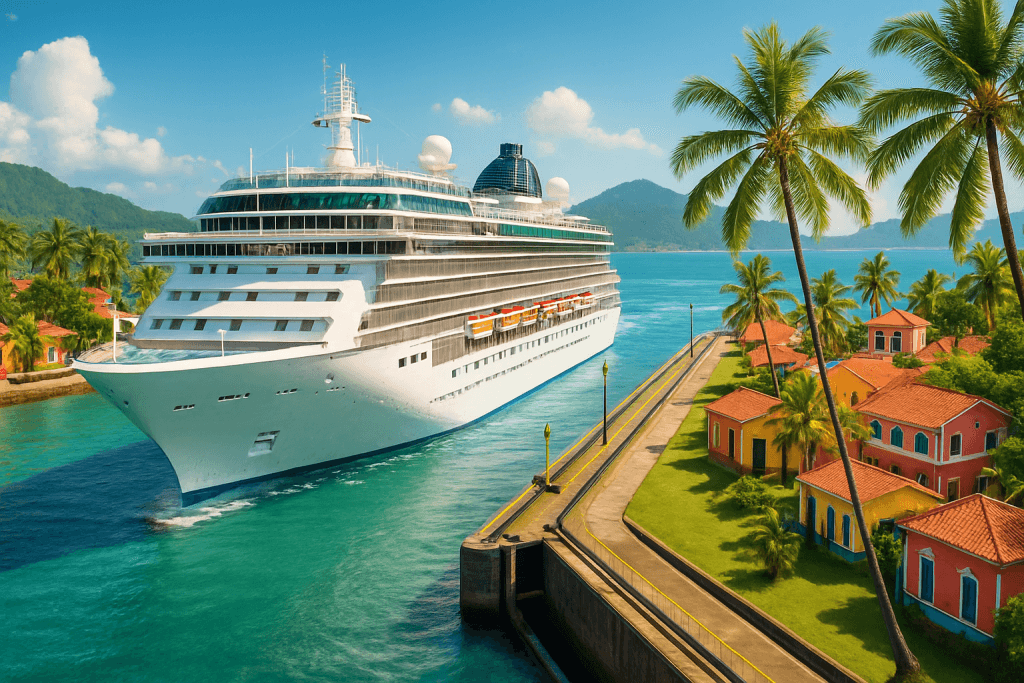The US State Department’s decision on 12 August 2025 to raise its travel advisory for all of Mexico to Level 2 (“Exercise increased caution”) has immediate consequences for Panama Canal cruises that routinely call at Mexican Pacific ports. Combined with existing high-risk designations for key Mexican Riviera destinations and stringent UK Foreign, Commonwealth & Development Office (FCDO) restrictions, this Mexico travel warning Panama Canal cruises shift may force cruise lines to rethink itineraries, shore excursions and insurance arrangements for British passengers.

US State Department Advisory: What’s Changed?
- The US advisory now covers the entire country at Level 2, reflecting concerns over terrorism, violent crime and kidnapping.
- Previously, warnings varied by state; some Mexican regions faced “Do not travel” (Level 4) or “Reconsider travel” (Level 3) status, but other areas were at Level 1 (“Exercise normal precautions”).
- Under Level 2, US travellers (including cruise passengers) must “exercise increased caution” nationwide and comply with restricted movement rules that mirror those imposed on US government employees, such as no after-dark inland travel and use of regulated transport only.
Impact on Panama Canal Itineraries
Reliance on Mexican Pacific Ports
Typical Panama Canal voyages from Florida to California span 14–17 nights and include up to six Mexican Riviera calls:
- Puerto Vallarta (Jalisco)
- Manzanillo (Colima)
- Mazatlán (Sinaloa)
- Cabo San Lucas (Baja California Sur)
- Puerto Chiapas (Chiapas)
- Acapulco (Guerrero)
With the advisory now blanket across Mexico, the legality and safety of each of these ports must be reassessed.
Ports Already in High-Risk Zones
US travel advisories before the nationwide upgrade flagged several Mexican Riviera ports as follows:
| Port | State | US Advisory Level | Key Restrictions |
|---|---|---|---|
| Manzanillo | Colima | Level 4 | Travel only in central tourist areas by air/sea |
| Mazatlán | Sinaloa | Level 4 | Historic centre only; sea/air access |
| Acapulco | Guerrero | Level 4 | Complete “Do not travel” |
| Puerto Vallarta | Jalisco | Level 3 | “Reconsider travel” for wider state |
| Puerto Chiapas | Chiapas (border zone) | Level 2 (US) | See FCDO below |
These restrictions have already prompted major cruise lines such as Princess Cruises to cancel calls to Manzanillo, and similar actions are expected for other Level 4 ports.
Alternative Routing and Sea Days
With Mexican stops curtailed, cruises risk prolonged sea days or unplanned detours to alternative Central American or Caribbean ports (e.g. Puntarenas, Colón, Cartagena), diluting the Mexican Riviera experience that underpins many Panama Canal itineraries.
Our Experience
We have a Panama Canal transit booked with Princess Cruises for October-November this year. Since the voyage was first listed by Princess, we have seen the following:
- Manzanillo was planned to be our first port stop. It was also the first to be dropped from the itinerary in line with US travel advice (although it still appears on maps for the voyage). Manzanillo was subsequently replaced by Puerto Vallarta which now classified as a ‘Reconsider travelling’ zone.
- Next, the solitary stop in Guatemala when the country’s risk level was raised to 3 (“Reconsider travel”).
- Guatemala was replaced by a new port, Puerto Chiapas in the state of Chiapas. Notably, this area is listed as ‘no go’ by the UK’s Foreign Office.
Given the escalating risk ratings, it is entirely possible we will see further itinerary changes, right up to the moment we arrive in port.
UK FCDO Advice and Insurance Implications
FCDO “Against All but Essential Travel” Areas
The FCDO advises against all but essential travel to many Mexican states—meaning UK travellers visiting these zones may invalidate their insurance:
- Chiapas: within 40 km of the Guatemalan border along the Pacific coast (includes Puerto Chiapas)
- Colima (except central Manzanillo port area)
- Guerrero (all of Acapulco)
- Sinaloa (outside Mazatlán and Los Mochis)
- Michoacán, Zacatecas, Tamaulipas, Chihuahua, Baja California, Guanajuato, Jalisco (areas south of Lake Chapala) and others
FCDO warns that travel insurance is normally invalidated if you journey into these “against all but essential travel” areas. You can find a map of the ‘no go’ areas here.
Puerto Chiapas: A Case Study
Puerto Chiapas sits within 40 km of the Guatemalan border and thus falls under the FCDO’s “against all but essential travel” advice for Chiapas. Any British cruiser disembarking there risks nullifying their insurance cover and contravening FCDO guidance, which also has implications for shore-excursion liability and on-shore medical assistance.
What It Means for British Cruisers
- Itinerary Changes: Expect Mexican Pacific ports to be removed or replaced with safer alternatives, changing the rhythm and cultural highlights of Panama Canal cruises.
- Stricter Shore Controls: Cruises will impose tighter excursion management—no independent forays into Mexican ports, mandatory use of approved coaches, and time restrictions to daylight hours only.
- Insurance Review: Travellers must verify that their policies cover routes excluding “against all but essential travel” zones; many standard policies will offer no protection if FCDO advice is breached.
- Cost and Availability: Alternative ports may command higher docking fees and transfer costs, potentially increasing overall cruise pricing.
Conclusion
The US’s elevation of Mexico to a Level 2 travel warning, combined with FCDO prohibitions on key cruise ports like Puerto Chiapas and Manzanillo, signals a pivotal moment for Panama Canal cruising. While the canal transit itself remains a bucket-list voyage, the Mexican Riviera segment is under unprecedented strain due to the Mexico travel warning Panama Canal cruises.
Cruise operators will need to innovate with new ports, enhanced security protocols and clearer insurance guidance to sustain this classic trans-continental itinerary for British travellers.
Please note that we use sponsored links on this blog. Although we may earn a referral fee or bonus points on some of these products and services mentioned, we never recommend anything we wouldn’t use ourselves.
Check out our full Affiliate Disclosure Policy for more info.
